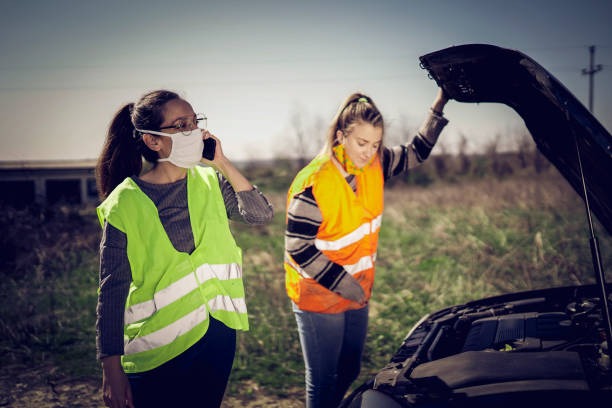Table of Contents:
- Common Causes Of Unexpected Car Breakdowns
- Immediate Steps To Take When Your Car Breaks Down
- Essential Safety Tips To Remember On The Road
- Tools And Supplies To Keep In Your Vehicle
- How To Get Help And What Services Can Provide Assistance
- Staying Informed: Why Weather And Traffic Updates Matter
- Preventive Maintenance Habits To Reduce The Risk Of Breakdowns
Common Causes Of Unexpected Car Breakdowns
When a vehicle unexpectedly loses power or grinds to a halt, drivers face inconvenience and safety risks. Automotive breakdowns can arise from several causes, but some issues appear far more often than others. Research from the Centers for Disease Control and Prevention highlights dead batteries, tire failures, and engine overheating as significant contributors. Modern vehicles loaded with electronics may also be vulnerable to electrical system failures triggered by extreme temperatures or undetected wear over time. In these moments, Sacramento roadside assistance provides vital help, ensuring stranded drivers get quick and reliable support. Environmental factors play a big role. Hot weather can overwork cooling systems and deplete battery life, while winter cold thickens fluids and reduces tire pressure. Potholes, debris, and uneven surfaces inflict hidden damage that accumulates, sparking trouble with little warning. Even a simple oversight—like running low on fuel between stations—accounts for countless roadside calls yearly. While regular maintenance helps reduce risk, not everything is avoidable.
Immediate Steps To Take When Your Car Breaks Down
A plan makes handling a breakdown safely easier. When you recognize a problem—be it a warning light, strange noise, or slipping gears—signal and ease your car to the shoulder or a safe area off the main road. Activate hazard lights to alert other drivers to your presence. Stay inside your vehicle with seatbelts fastened unless you are in immediate danger (such as from fire or smoke).
If visibility is poor, use reflective triangles or road flares for additional safety. Note your surroundings—exit numbers, highway markers, or GPS coordinates—to relay your location efficiently when you contact help. If stopped in an unsafe spot, carefully exit the vehicle from the side away from traffic, then find shelter behind barriers.
Essential Safety Tips To Remember On The Road
Being prepared during a roadside emergency can protect you and your passengers while help is on the way.
- Charge your phone completely before leaving home. A spare portable charger ensures reliable communication even if you are stranded for hours.
- Always wear your seatbelt, even when stopped at the roadside, as additional vehicles can present unpredictable risks.
- Deploy hazard lights, reflective triangles, or road flares, particularly at night or in low-visibility areas, to make your car visible to oncoming traffic.
- Use GPS apps or road signs to provide precise location information to responders.
- Stay calm and communicate clearly with emergency responders or roadside assistance services.
- If you must wait for help, ensure your group is warm, hydrated, and secure inside the vehicle or behind a barrier.
These points can make a meaningful difference in the outcome of an unexpected roadside emergency.
Tools And Supplies To Keep In Your Vehicle
Being prepared for a breakdown means more than a well-tuned car—it also means a stocked emergency kit. Jumper cables or a portable jump starter address most battery-related stalls. A properly inflated spare tire, jack, and lug wrench offer peace of mind in the event of a flat. LED flashlights with extra batteries are essential for visibility. A well-supplied first-aid kit can manage minor injuries until professional help arrives.
Store water bottles, snacks, and lightweight blankets for extended waits during extreme weather. Reflective triangles or flares keep your vehicle visible and reduce the risk of additional accidents. These supplies are inexpensive and simple to gather, yet could transform a harrowing experience into a manageable inconvenience, giving comfort to both the driver and passengers while awaiting roadside rescue.
How To Get Help And What Services Can Provide Assistance
Prompt access to help is key in making breakdowns less daunting. Many insurance policies and automotive clubs offer roadside assistance services, which are now even more accessible through mobile apps. These resources can deploy tow trucks, mechanics, fuel, or tire changes, often with real-time tracking and status updates, so drivers aren’t left guessing how long help will take. If safety feels threatened by the environment—busy highways, extreme weather, or isolation—calling 911 should be your first step.
Share detailed information about your location and situation with emergency responders. Reliable assistance services fix cars and bring peace of mind, reducing stress and ensuring you’re not left alone to face the issue. Quick and clear communication gets you help faster, making a difficult event much easier to manage.
Staying Informed: Why Weather And Traffic Updates Matter
Awareness of real-time road and weather conditions helps you avoid breakdown-prone scenarios altogether. Severe weather, construction, and traffic jams can make breakdowns riskier or delay help. Check forecasts and navigation apps before each journey, adjusting your route or departure time if warranted.
Stay tuned to local radio or official websites for unexpected hazards along your path. Being flexible and informed allows you to keep out of dangerous areas, reduce downtime, and make decisions quickly if an incident occurs. Informed drivers protect themselves and others by acting with foresight and caution.
Preventive Maintenance Habits To Reduce The Risk Of Breakdowns
Staying on top of maintenance is proven to limit unexpected failures. Regular oil changes, topping off fluids, and vigilant tire checks go a long way. Pay attention to the dash cluster for warning signals, and inspect your battery and tire treads before each long trip. Even newer vehicles require frequent inspections to catch developing problems like worn belts or low brake pads.
Before hitting the road, set aside a few minutes to look under the hood, check tire pressure, and make sure your emergency kit is stocked. These steps not only reduce breakdown risk but also provide peace of mind for you and your passengers.
